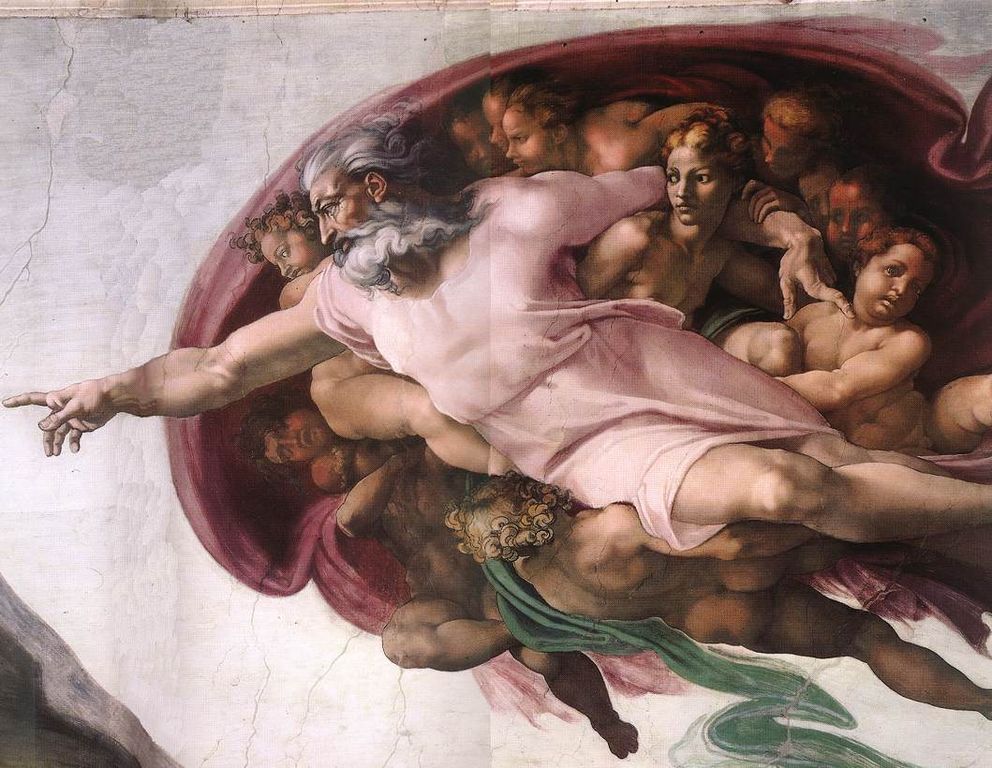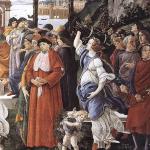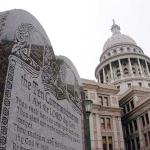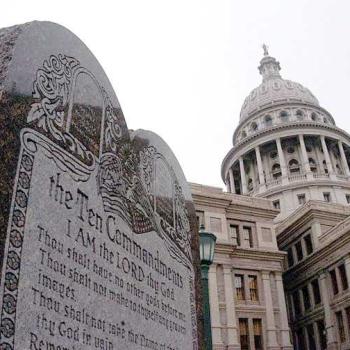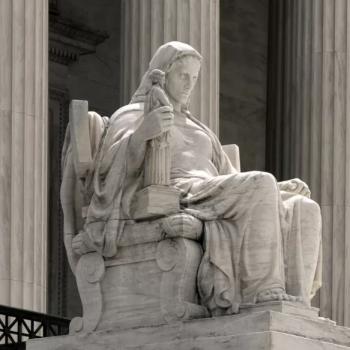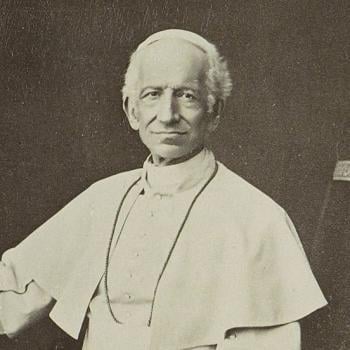Michelangelo’s frescos on the Sistine Chapel ceiling represent the peak of the High Renaissance. Even if you know little else about Renaissance art, you’ve seen at least one of those frescos, The Creation of Adam, many times.
The Sistine Chapel was built by Pope Sixtus IV (r. 1471-1484), who had the walls gorgeously illustrated with biblical scenes by a team of the greatest artists of the day. Sixtus IV was also famous for nepotism. Several of his nephews were named Cardinals by Sixtus. One of these was Cardinal Giuliano della Rovere, who reigned as Pope Julius II from 1503 to 1513. It was Julius II who commissioned — forced may be a better word — Michelangelo to paint the ceiling.
The story of Michelangelo’s labor on the Sistine Chapel ceiling was the subject of a best-selling novel, The Agony and the Ecstasy by Irving Stone, published in 1961. The novel was the basis of a somewhat cheesy 1964 film of the same title, starring Charlton Heston as Michelangelo and Rex Harrison as Pope Julius II. So we might think this story is well known, but there are parts you may not have heard.
About Pope Julius II, the Warrior Pope
Between Sixtus IV (r. 1471-1484) and Julius II were three other popes: Innocent VIII (r. 1484-1492), Alexander VI (r. 1492-1503), and Pius III, who became Pope in September 1503 and died 26 days later. Pope Alexander VI was of the infamous Borgia family and managed to run the papacy in a way that enormously benefited his relatives. When Julius II moved into the Vatican he refused to occupy Alexander VI’s lavishly decorated living quarters. Julius II instead chose to occupy some upstairs apartments. He had the walls of his apartments illustrated by the popular Renaissance artist Raphael. The results were some of Raphael’s best works, such as The School of Athens. Truly, Pope Julius II was one of history’s great patrons of art.
But Pope Julius II was known to his contemporaries as il terrible, an Italian phrase that translates into English about as one might expect. He was also called the Warrior Pope. He was imperious and hot tempered, and he made wars. As described by Eamon Duffy (Saints and Sinners: A History of the Popes, Yale University Press, 2015), “Julius stormed up and down the Italian peninsula in his suit of silver armour at the head of his own troops: on one occasion he belaboured with his staff the quaking cardinals who were reluctant to follow him through snowdrifts breast-high on their horses.” Among his objectives were taking back papal territory that had been seized by the Borgia family when Alexander VI was Pope, and driving the French out of Italy. It’s said he chose the name Julius not after Pope Julius I, but Julius Caesar.
But this post is about Julius II’s patronage of the arts. He initiated many projects to improve and beautify the city of Rome. The most ambitious of these was to take up the abandoned plan of Pope Nicholas V to build a new Saint Peter’s Basilica. Construction began in 1506 and would continue through the reigns of several Popes until 1626. A large part of Julius II’s vision for the new Saint Peter’s was his own ostentatiously grand marble tomb. And this brings us to Michelangelo.
The Sculptor and the Pope
The original plan for Pope Julius II’s tomb was a massive three-story structure with about forty statues. And Julius knew who he wanted to sculpt it — the Florentine artist Michelangelo Buonarroti (1475-1564). Julius had seen the exquisite Pietà Michelangelo had sculpted for the old Saint Peter’s Basilica. There was no one more skilled.
Michelangelo had returned to Florence after completing the Pietà. In Florence he had sculpted his celebrated David, which was completed in 1504. Julius II summoned Michelangelo to Rome in 1505 to offer him the commission of the tomb. By all accounts the 30-year-old Michelangelo accepted the commission with enthusiasm. Sculpting big, heroic figures was work that filled his soul. Michelangelo spent the next several months at Carrara choosing the marble. At some point he did begin sculpting the tomb.
But the work was interrupted. According to one story, Julius II hit the pause button on the tomb because he needed money for the new Saint Peter’s. Another story says that he was persuaded it was bad form for someone to build his own tomb while still alive. Or perhaps work on the tomb was interrupted because the Sistine Chapel ceiling became a priority.
The Sistine Chapel Ceiling
According to art historian David Lown (The Sistine Chapel, 2014), one day after offering mass Pope Julius II realized there was a crack on the ceiling of his chapel. It would have to be patched and repainted. The ceiling originally had been painted with gold stars on a blue background, so some touchup, at least, would be required. But if it were going to be repainted, why not do it in grand style? And so Julius II decided to add more glorious art. And Michelangelo would be just the guy to paint it.
But according to one of Michelangelo’s early biographers, Ascanio Condivi, it was the architect Donato Bramante who sold Julius on the idea of having Michelangelo paint the ceiling with new frescos. Bramante appreciated that Michelangelo was primarily a sculptor and believed he would fail at fresco painting. Why Bramante would have wanted Michelangelo to fail, I do not know. By many accounts Michelangelo did object to being asked to paint instead of sculpt, but Julius didn’t give him a choice.
Wherever the idea to repaint the Sistine Chapel ceiling came from, the original commission was to paint the Twelve Apostles and some pleasant geometric figures. But Michelangelo and Pope Julius II had at least one trait in common — neither did things by halves. If Michelangelo was being forced to paint frescos on a ceiling, he was going to paint frescos on a ceiling. By his own account, Michelangelo told the Pope the plan was “una cosa povera” — a poor thing — and that he should be allowed to paint what he liked. Nobody believes Julius agreed to that. Any artistic expression would have needed approval of theologians, if not Julius himself. We don’t know how the subjects of the final work were chosen, or how much input Michelangelo was allowed in the choices.
Michelangelo’s Agony
Work on the 12,000 square foot ceiling began in May 1508. The first problem to be solved was to devise scaffolding that allowed the chapel to be used through the duration of the painting. Instead of building scaffolding from the floor up, Michelangelo devised a platform held up by brackets inserted into holes in the wall. The scaffolding was moved as sections of the ceiling were finished.
By October, Michelangelo was ready to start painting. In fresco painting, water-soluble ink is applied to wet plaster so that the ink and the wall are inseparable. Imagine painting a blank jigsaw puzzle one piece at a time. Each day fresh plaster was applied to the section of wall to be painted that day. Each day a simple drawing of that day’s puzzle piece was dusted with charcoal and held up to the plaster. The lines on the drawing were pinpricked, leaving dots of charcoal on the wet plaster. That gave Michelangelo a guide to follow so that the images on the separate puzzle pieces were in alignment.
Michelangelo did have assistants to help with preparation, but he did all the painting himself. Most of the time he stood on the scaffolding and painted directly overhead. “My beard’s pointing at heaven, my brain’s crushed in a casket, my breast twists like a harpy’s. My brush, above me all the time, dribbles paint so my face makes a fine floor for droppings!” he wrote. The work was physically grueling, even painful. He suffered terrible neck and back pain and damaged his eyesight.
At one point, while Julius was away fighting one of his wars, Michelangelo ran out of money. He stopped painting and tracked the Pope to his residence in Bologna. Julius arranged payments for him and gave him a place to live, rent free, in a sumptuous piazza for the duration of the ceiling project. No matter what happened, the painting of the Sistine Chapel ceiling must continue, Julius said.
The Composition
Michelangelo completed the ceiling frescos in October 1512. Pope Julius II was very pleased but didn’t live long to enjoy what Michelangelo had done. The Pope died in February 1513.
What Michelangelo painted was the history of humanity as it was understood at the time. The center of the ceiling shows us scenes from the book of Genesis. These include the creation of light, the creation of Adam and Eve, the Garden of Eden story, and the story of Noah and the Great Flood. These central scenes are surrounded by portraits of important people from the Bible who came before Jesus — Jeremiah, Ezekiel, Jonah (and a large fish), Isaiah, Daniel, and so on, plus pagan sybils. There are 343 individual figures in the scenes. This My Modern Met page provides a good quick tour of the images.
Michelangelo sometimes painted himself into scenes. For example, in the southwest corner there is a scene in which Judith, a heroine of the Jews, has decapitated Holofernes, the commander of the Assyrians. The scene shows Judith and her maid carrying Holofernes’s head, which Michelangelo gave his own features.
After the Task Was Done
The next Pope, Leo X (r. 1513-1521) put Michelangelo back to work on Pope Julius II’s tomb. Work on the tomb project would continue, on and off, until 1545. The project kept getting pared down, and the finished tomb was much simpler and smaller than what Pope Julius II had originally wanted. And it was never an actual tomb, since Julius is buried in Saint Peter’s Basilica and the tomb carved by Michelangelo was placed in the church of San Pietro in Vincoli in Rome. It does feature one of Michelangelo’s best works, the marble Moses. Michelangelo would later say that not being allowed to sculpt the original tomb project was his life’s biggest disappointment.
Pope Leo X needed money to continue the work on the new Saint Peter’s Basilica, and Julius II’s wars and art patronage had left the papal purse a bit depleted. And Leo himself was never known for frugality. In 1517 Leo announced that anyone who contributed money to the building of Saint Peter’s would be granted an indulgence, in this case a promise of less time in Purgatory. A priest in Wittenberg, Germany, named Martin Luther was outraged and initiated a protest that began the Reformation.
A later Pope, Clement VII (r. 1523-1534), commissioned Michelangelo to paint the space behind the altar of the Sistine Chapel. Michelangelo completed this work, The Last Judgment, in 1541. He spent his final years as chief architect of the new Saint Peter’s Basilica, which some have called his last and greatest masterpiece.
A postscript: Michelangelo was not shy about painting nude bodies (see David). After he died, an artist named Daniele da Volterra (1509-1566) was hired to paint loinclothes and other coverings on the exposed male parts in The Last Judgment. This earned da Volterra the nickname Il Braghettone (“the breeches maker”). Some of da Volterra’s work was removed from the Sistine in later restorations, but some of it is still there.
